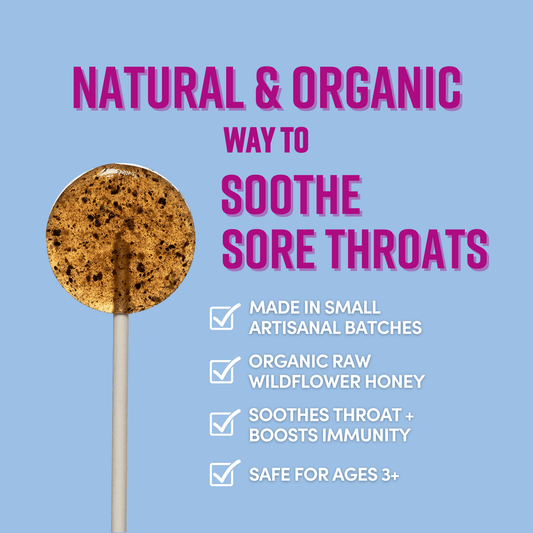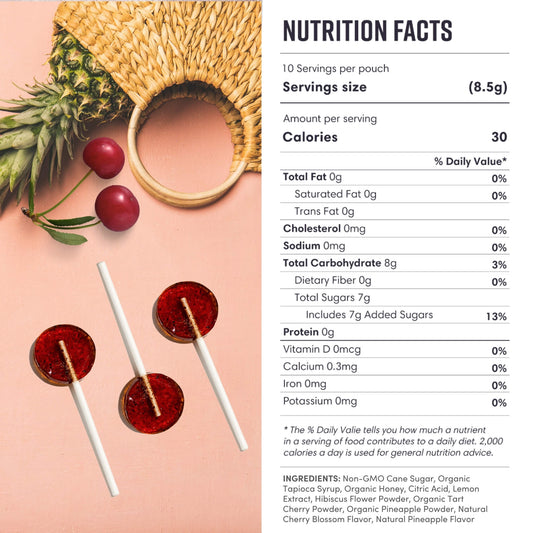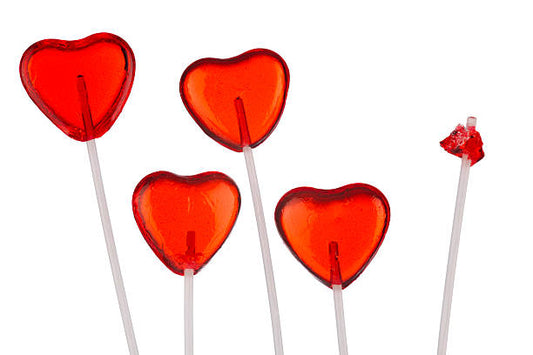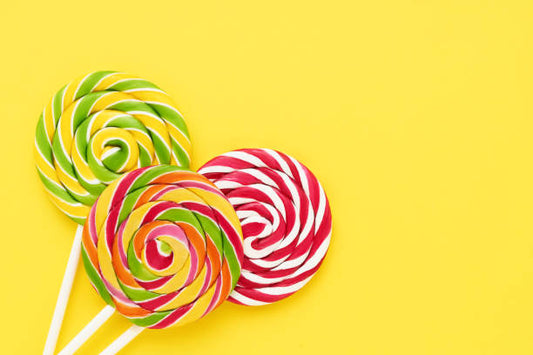Lollipops are such a delightful treat enjoyed by people of all ages! They often sprinkle our memories with the joy of childhood. Whether you're savoring one at a fun birthday party or enjoying it at your favorite local movie theater, it’s tough to resist the sweet charm of a lollipop. However, it's also a good idea to be mindful of their caloric content, especially for those keeping an eye on their dietary choices. This article will explore how many calories are in a single pop lollipop and look at various factors that can influence its caloric value.
Understanding Caloric Content
To appreciate the caloric impact of a lollipop, one must first understand what calories represent in food. Calories are a unit of measurement that quantifies the amount of energy provided by food. This energy is crucial for our body's functions, from breathing to exercising. Without a sufficient caloric intake, our bodies would struggle to perform basic tasks, leading to fatigue and decreased performance in daily activities.
What are Calories?
In nutritional terms, a calorie is defined as the amount of heat needed to raise the temperature of one gram of water by one degree Celsius. In practice, the term "calorie" often refers to kilocalories (Kcal), which represent 1,000 calories. These kilocalories are what we see on nutritional labels and help us assess the energy content of food. Understanding this distinction is essential, especially when evaluating dietary choices, as many people may underestimate their caloric intake if they are not aware of how these units translate into actual energy consumption.
Calories can come from various macronutrients: carbohydrates, proteins, and fats, each of which contributes a different amount of energy per gram. Carbohydrates and proteins provide approximately four calories per gram, while fats contribute around nine calories per gram. This difference in caloric density is significant when considering food choices; for instance, a small amount of fat can pack a more substantial caloric punch compared to the same weight of carbohydrates or proteins. This is why many high-fat foods can lead to a higher caloric intake, even in smaller serving sizes.
How are Calories Measured?
Calories in food are measured primarily through two methods: the Atwater system and bomb calorimetry. The Atwater system uses average values based on the macronutrient content of food. For example, if a lollipop contains primarily sugar, its caloric value would be calculated based on the sugar content using established averages for carbohydrates. This method is widely used for its simplicity and efficiency, allowing manufacturers to provide consumers with quick information on caloric content.
On the other hand, bomb calorimetry provides a laboratory method to measure total caloric energy. In this technique, food is burned in a controlled environment, and the heat produced is measured, giving an accurate representation of the energy content of that food item. While this method is more precise, it is also more complex and typically reserved for scientific research and food development. Understanding these measurement techniques can help consumers make informed choices about their diets, as it highlights the importance of not only the quantity of calories consumed but also their source and how they contribute to overall health.
The Science Behind Lollipop Production
The journey from sugar to lollipop involves several steps, and understanding the ingredients can shed light on the caloric content. Most commercial lollipops have a simple ingredient list, but that doesn't diminish their energy impact.
Ingredients Used in Lollipops
The primary ingredient in most lollipops is sugar, often accompanied by corn syrup, flavorings, and colors. The basic production process involves boiling sugar and glucose options until they reach a specific temperature, then pouring them into molds and allowing them to cool. Other common additions may include citric acid for tartness or artificial flavoring to provide a variety of tastes.
Depending on the brand and type, additional ingredients can also be seen, such as maltodextrin or natural colorings, but sugar typically constitutes the majority of the product. This sugar presence plays a significant role in determining the caloric count of the lollipop. Beyond these basic components, some manufacturers have begun to experiment with alternative sweeteners, such as stevia or erythritol, to cater to health-conscious consumers. These substitutes can alter not only the caloric content but also the flavor profile, offering a different experience for those who prefer a lower-sugar option.
The Caloric Impact of Sugar
Sugar is calorie-dense. Each gram of sugar contains about 4 calories, which can quickly add up in lollipop production, especially as larger sizes or multiple lollipops are consumed. In many standard lollipops, sugar can account for more than 90% of the total caloric content, making it a significant contributor to their overall energy value.
Additionally, the body's metabolism of sugar can influence how calories are utilized and stored, further emphasizing the need to be mindful of lollipop consumption. The rapid absorption of sugar into the bloodstream can lead to quick spikes in energy, followed by crashes, which may leave consumers reaching for more sweets to regain that initial burst of energy. This cycle can contribute to a pattern of overconsumption, particularly among children, who are often drawn to the bright colors and enticing flavors of lollipops. Furthermore, the combination of sugar with other ingredients like citric acid can enhance the flavor experience, making it even more tempting to indulge, thus raising questions about moderation and balance in dietary habits.
Breaking Down the Calorie Count in a Lollipop
When considering the caloric count in a single pop lollipop, it is essential to recognize that various factors can affect this value, including size and flavor.
Calorie Count in Different Sizes of Lollipops
The size of a lollipop directly influences its calorie content. While small lollipops might contain around 30-50 calories, larger pop lollipops can reach upwards of 100 calories or more. Below is a brief breakdown of different lollipop sizes and their approximate caloric values:
-
Mini Lollipop (approximately 6 grams): 30 calories
-
Standard Lollipop (approximately 16 grams): 50-80 calories
-
Large Lollipop (approximately 32 grams): 100-150 calories
As the size increases, so does the caloric intake, which is crucial for those tracking their dietary consumption. Additionally, it's important to consider the frequency of consumption. A mini lollipop might seem harmless, but indulging in several throughout the day can quickly add up, leading to a significant caloric surplus. This is especially relevant for children, who may not be as aware of their overall sugar intake and the cumulative effects of multiple threats.
How Flavor Affects Calorie Count
The flavoring of lollipops can also introduce variations in calories, particularly when additional ingredients, such as cream or chocolate, are included. For example, a chocolate-flavored lollipop may contain more calories due to the cocoa and other ingredients present.
Furthermore, fruit-flavored lollipops may use natural fruit juices or purees, impacting caloric content, albeit usually still around the same range as their sugary counterparts. Therefore, flavor can lead to subtle shifts in calorie counts that are worth noting for calorie-conscious consumers. In addition to flavoring, the type of sweeteners used can also play a role. Some brands may opt for high-fructose corn syrup or artificial sweeteners, which can alter the overall caloric profile and nutritional value of the lollipop. This variability means that consumers should always check the packaging for specific nutritional information to make informed choices about their treats.
Comparing Lollipop Calories to Other Sweets
Lollipops are just one of many candies available in the market. Understanding how their caloric content compares to other sweets can provide perspective for those deciding on a treat.
Lollipop vs. Chocolate Bar: A Caloric Comparison
When comparing lollipops to chocolate bars, it is vital to acknowledge the differences in ingredient compositions. A standard chocolate bar containing around 200 calories can have over twice the caloric content of a larger lollipop. However, the appeal of lollipops differs as they often provide a longer-lasting experience due to their slow dissolution in the mouth.
Comparing sizes, a common chocolate bar (approximately 50 grams) can equate to 200-250 calories, which, when taken versus a large lollipop, shows the potency of solid chocolates in terms of caloric density. Additionally, chocolate bars often contain fats and sugars that contribute to their rich flavor and texture, making them a more indulgent choice for many consumers. The combination of cocoa, sugar, and sometimes nuts or caramel creates a mouthfeel that is distinctly different from the pure sweetness of a lollipop, which is primarily composed of sugar and flavoring agents.
How Lollipops Stack Up Against Gummy Bears
Gummy bears, another favorite treat, typically contain about four calories per bear. Considering a standard serving, which is often around 10 bears, this can amount to approximately 100-150 calories. Therefore, a large lollipop and a moderate serving of gummy bears might provide similar calorie counts, yet the experience and texture between the two differ significantly.
Ultimately, the choice between a lollipop and gummy bears may depend on personal preferences in texture, taste, and the proneness towards sugar content in either candy form. Gummy bears offer a chewy, gelatinous texture that many find satisfying, while lollipops provide a crisp, hard candy experience that can be savored over time. Furthermore, the flavor profiles of both candies can vary widely, with lollipops often featuring fruity or unique flavors, while gummy bears can come in a range of fruity, sour, or even cocktail-inspired varieties. This diversity in flavor and texture can significantly influence a consumer's choice when it comes to satisfying their sweet tooth.
The Impact of Lollipop Consumption on Health
While indulging in a sweet treat like a lollipop occasionally is generally acceptable, it is important to consider the impact of sugar consumption on health.
The Effect of Sugar on the Body
Excessive sugar intake has been linked to various health issues, including obesity, diabetes, and dental problems. When lollipops, with their high sugar content, are consumed in large quantities, they can contribute to higher caloric intake and, subsequently, potential weight gain.
Sugar can also lead to spikes in blood sugar levels, prompting a surge of energy followed by a crash, which can affect energy levels and mood stability. This rollercoaster effect can lead to increased cravings for more sugary foods, creating a cycle that is hard to break. Additionally, the frequent consumption of sugary snacks like lollipops can alter the gut microbiome, potentially leading to digestive issues and impacting overall health.
Moderation and Balanced Diet: Key to Healthy Snacking
Enjoying lollipops can be a delightful part of a balanced diet, especially when you keep moderation in mind! Instead of having several lollipops at once, savoring one every now and then can feel like a special treat. By mixing sweets with a colorful variety of nutritious foods, you’ll ensure that you’re getting a good range of nutrients.
Incorporating lollipops into a mindful eating plan makes for a fun experience without piling on excess sugar or calories. This way, you can fully enjoy your snacks while still working towards your dietary goals! Plus, opting for lollipops made with natural sweeteners or ones that are sugar-free is a smart choice, allowing you to relish those delightful flavors without worrying about refined sugars. And don’t forget, enjoying your lollipop while reading a good book or chatting with friends can make it even more enjoyable, turning a simple treat into a lovely moment to cherish!
Conclusion
To wrap things up, learning about the caloric content of one pop lollipop can really help us enjoy our snacks while taking care of our diet! By considering the size, ingredients, and how they stack up against other sweets, we can make smarter snack choices. Plus, when we keep moderation in mind, lollipops can still be a fun treat that fits into our healthy lifestyle! And let’s not forget the deliciousness of Momma Bear Organics products, which offer great taste along with health benefits in every lollipop!










